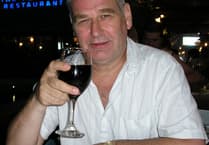Early last century, a couple of poetic movements developed in this area. The ‘Dymock Poets’, were a coterie of self-consciously ‘poetic’ poets who flourished for a few years before the First World War. The Poets included Edward Thomas, whose atmospheric poem ‘Adlestrop’ is a modern-day classic, Rupert Brook, (neither of whom survived the war), Lascelles Abercrombie and their muse, Eleanor Farjeon, whose stay in Gloucestershire was a brief interruption to her life in Sussex.
Apart from ‘Adlestrop’ , there is nothing particularly symbolic of Gloucestershire in the works of these poets, unlike the poetry of Will Harvey and Ivor Gurney, whose works were gloriously local (except perhaps for Will Harvey’s delightful ‘Ducks’ as observed from a prisoner of war camp in Germany). Will Harvey became the Pillowell poet, an unchallenged appellation.
The West Gloucestershire literary tradition continued in the second half of the 20th century with local writers Winifred Foley and Dennis Potter, and there was an invasion of writers and broadcasters, who moved to the St Briavels area, formed an attachment to the area, and never moved away.
John Morgan, television journalist and author was another incomer, to Mork near St Briavels. He was a prolific journalist, opera librettist and television personality. Although never an outstanding rugby player, he followed the game with great understanding, and compiled the only book (‘Side-Steps), covers Welsh national as well as Forest rugby. It’s his diary of the 1984-5 rugby season, co-authored with the great Welsh wing three-quarter Gerald Davies, and records rugby at Bream and Berry Hill as well as at Cardiff Arms Park (as it then was).
Philip Toynbee, a St Briavels Common incomer, was a member of a well-known liberal and intellectual dynasty which flourished in England in the 19th and 20th Century and included reformers, historians and literary and political figures. During our 10-year exile in the South Pacific I was not surprised to learn that his uncle had been for many years colonial governor of Papua New Guinea.
John Morgan and Philip Toynbee were among the distinguished personalities illuminating pub life in St Briavels (the George early evening) and in Monmouth (the Beaufort or the Punch House, Saturday lunchtime). In Monmouth we would be joined by Jeremy Sandford, the writer of the powerful television drama about homelessness, ‘Cathy Come Home’.
John and Philip both died of cancer, and, being consummate professionals, produced works depicting their journey through their terminal illnesses. John produced a television documentary, and Philip a journal ‘End of a Journey’, a brave and passionate record.




